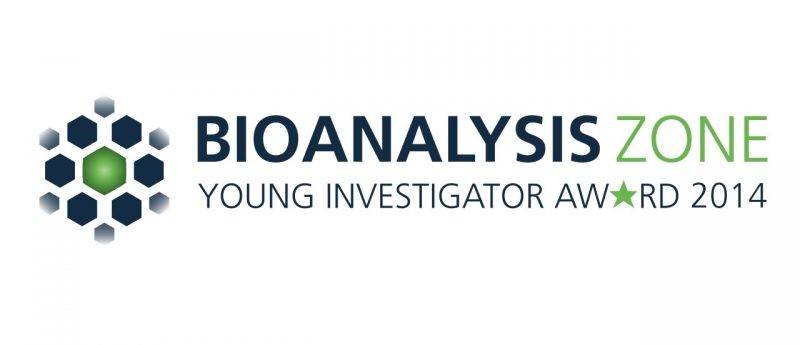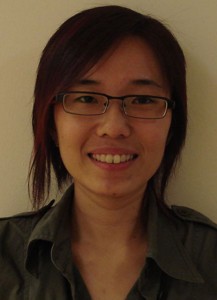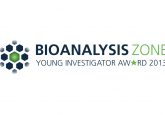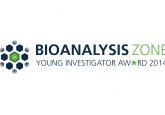2014 Young Investigator: Xue Li Guan

Nominee:
Nominated By:
Supporting Comments:
What made you choose a career in bioanalysis?
Despite the impact of lipids on health, medicine and other essential processes, little is known about their prevalence and functions. My research interests are driven by what are seemingly fundamental questions – what lipids exist, how do we capture them, what functions do each distinct chemical entity encode? I am interested to develop tools for comprehensive and quantitative lipid measurement and importantly to be able to apply them to study lipid biology. My training in lipidomics started when I was an undergraduate and I will continue to contribute to the advancement of the field, which has an impact on basic and translational research in human health science.
Describe the main highlights of your bioanalytical research, and its importance to the bioanalytical community.
I have established novel LC–MS-based approaches for systems-level scale analysis of lipids. These include analytical and computational developments for:
Non-targeted lipidomics based on high resolution MS and chemometry for differential profiling
Characterization and development of targeted quantification of membrane and storage lipids of various eukaryotic systems, including humans, yeast, fruit flies, mice and rats.
I further translated my bioanalytical work to medically relevant organisms, e.g. Mycobacterium species and parasites. The sensitive and specific biochemical tools are applied to pathway and biomarker discoveries for infectious diseases, which represent global disease burdens.
In summary, I have made available to the community a range of toolsets and databases:
1. Methods reports for model organism lipidomics
2. Databases to facilitate lipid analyses, including
theoretical masses of membrane lipids from yeast for tentative identification
a comprehensive list of membrane lipids identified in the fruit fly, accompanied by multiple reaction monitoring transitions (facilitate method transfer)
new lipid structures deposited in LipidMaps Structural Database (LMSD).
3. Biological datasets for mining
Communication and sharing in the community is critical for the progress of bioanalytical tool development. The availability of analytical toolsets and biological datasets facilitates research progress in general.
Describe the most difficult challenge you have encountered in the laboratory and how you overcame it.
Lipid analyses pose a substantial number of challenges to analysts. Unlike genes and proteins, there are no ‘simple’ building blocks for lipids. Furthermore, lipids can be modified enzymatically as well as non-enzymatically, consequently, the actual numbers and chemistries of lipids that exist are difficult to predict. When lipidomics just emerged in early 2000s, there was a lack of tools including databases for lipid identification, and further hampered by availability of synthetic standards for structural characterization and quantitation. To overcome this, I created a simple database containing theoretical calculations for phospholipids and sphingolipids in model organisms (Guan and Wenk, 2006) to facilitate tentative identification of lipids based on m/z using high resolution MS. I further capitalized on our understanding of biology, particularly lipid metabolism, to generate ‘standards’. Specifically, deletion of genes encoding lipid biosynthetic enzymes, in the absence of compensatory pathways, will lead to substrate accumulation and reduction of products. Building on this principle, I systematically analyzed the lipids of yeast deletion mutants in the sphingolipid pathways and successfully characterized the sphingolipidome of the yeast using MS and MS/MS, and further developed MRM methods for the quantitation of yeast lipids. This has found widespread applications for addressing diverse biological questions.
Where do you see your career in bioanalysis taking you?
Being a first generation graduate in the field of lipidomics, specializing in the bioanalysis of lipids, has given me a head start to build an independent group as an academic researcher. Given the importance of lipids in a wide range of biological processes and their impact on human health and diseases, my training in bioanalysis has allowed me to move from basic research involving model organisms to translational work involving deadly pathogens including Mycobacterium and Trypanosomas species. I aspire to contribute further to the field by advancing technological and informatics development and apply them to understand lipid functions as well as to evaluate their potential for dietary, therapeutic interventions for human health, as well as biomarkers for infectious diseases, which represent global health burdens.
From an academic perspective, there is a strong need to educate younger generation biologists on principles of bioanalytical techniques and more specifically lipidomics. I envision myself to share my knowledge and expertise in these areas through my research as well as teaching.
The translational implications of the bioanalytical work make my academic career exciting as it is not restricted to the classroom or laboratories but will involve interactions with pharmaceutical and technological industries, and very importantly with the clinics/ field.
How do you envisage the field of bioanalysis evolving in the future?
Bioanalysis is routine for many pharmaceutical developments, environmental and toxicology studies. Advances in technologies, particularly LC–MS, has led to the capacity to perform ‘global analyses’ of biomolecules, and the emergence of the ‘-Omics’ era, which include proteomics, metabolomics, glycomics and lipidomics. Cost effectiveness of these technologies has been one of the factors limiting researchers’ access to these powerful tools and impeded their developments and applications. Clearly there is a demand for high-throughput analytics, particularly quantitative tools, in biology. I envisage that LC–MS will become a common platform and an integral part of biology, like it is in chemistry and pharmacy. There will be increasing numbers of bioanalytical platforms/infrastructure available to support biologists. Bioanalytical instrumentation in the future may become part of ‘standard’ equipment owned by individual laboratories to complement biological studies. This will become more feasible with a wide-range of products available and competitive offers.
From a technological developments perspective, I speculate that imaging technologies will be up and coming, arising from the demand for spatial resolution of biomolecules to provide an additional layer of biologically relevant information. Furthermore, instrument sensitivities will improve tremendously with the need to perform ‘single cell’ analyses to overcome the heterogeneity at cellular levels.
Please list 5 of your recent publications, and select one that best highlights your career to date in the field of bioanalysis.
1. Guan XL, Cestra G, Shui G et al. Lipidomics of Drosophila melanogaster during development. Developmental Cell. 24(1), 98–111 (2013).
2. Shui G, Guan XL, Low CP et al. Towards one step analysis of major cellular lipidome using liquid chromatography coupled to mass spectrometry. Molecular Biosystems. 6(6), 1008–1017. (2010).
3. Guan XL, Souza CM, Pichler H et al. Functional interactions between sphingolipids and sterols regulating cell physiology. Mol. Biol. Cell. 20(7), 2083–2095 (2009). * Awarded MBC paper of the year, 2009.
4. Guan XL, He X, Ong WY, Yeo WK, Shui G, Wenk MR. Non-targeted profiling of lipids during kainate induced neuronal injury. FASEB J. 20(8), 1152-1161 (2006).
5. Guan XL, Wenk MR. High resolution and targeted profiling of phospholipids and sphingolipids in extracts from Saccharomyces cerevisiae. Yeast. 23(6), 465-477 (2006).
First choice: Guan XL, Souza CM, Pichler H et al. Functional interactions between sphingolipids and sterols regulating cell physiology. Mol. Biol. Cell. 20(7), 2083–2095 (2009).
Reasoning:
- The work employed my MS-based method (2006).
- To descriptive lipid profiles of yeast mutants, we combined genetics, revealing for first time functional interactions of lipids in vivo.
- Resolution offered by MS enabled revelation of specificity and selectivity of structure-to-function relationship of lipids.
- Demonstration of method utility and power of analytics in biology.
- Representation of my approach in my career, capitalizing on careful integration of biology and analytics to reveal functions.



